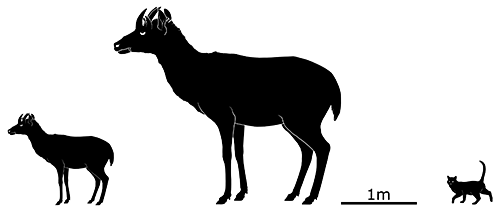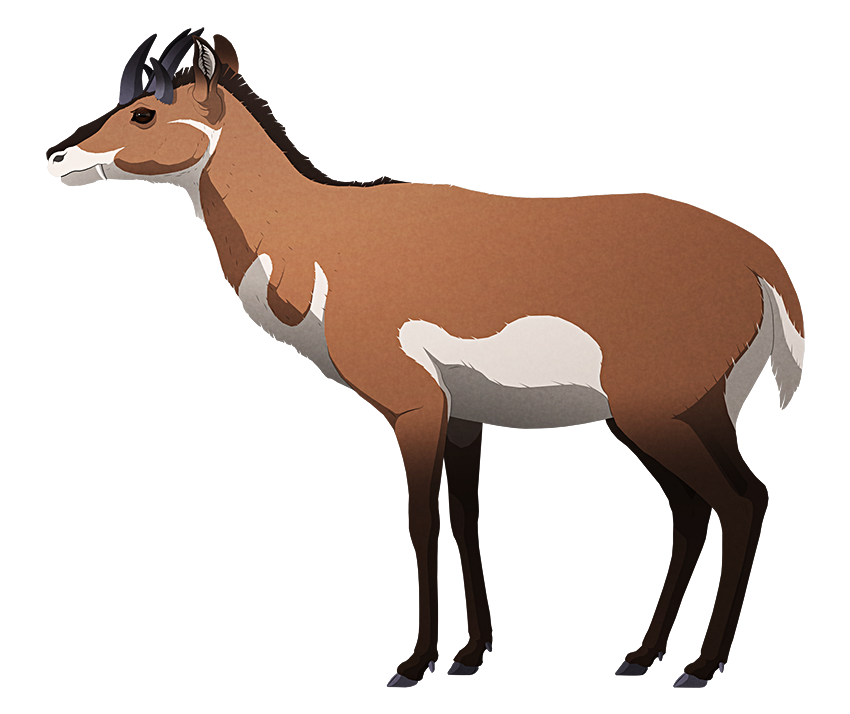During the mid-Miocene, about 15 million years ago, a region of central and southeast Italy around Gargano and Scontrone was cut off from the mainland by rising sea levels.
For the next 7-10 million years this island (or perhaps a cluster of islands) was left isolated, and an unusual ecosystem developed known as the “Mikrotia fauna”. With the island starting off lacking large predators, small herbivorous animals like rodents, pikas, and waterfowl became huge – and then small predators like gymnures and carnivorous birds also grew to keep up with the increasing size of their prey.
One of the strangest residents of the island(s) was Hoplitomeryx, an early type of ruminant that resembled a deer or pronghorn. Nicknamed the “prongdeer”, it had a total of five horns on its head and large protruding fangs similar to some modern deer.
Multiple species of Hoplitomeryx have been identified, representing four different size classes ranging from huge down to tiny insular dwarfs. The largest is estimated to have been similarly sized to modern moose, standing around 2m tall at the shoulder (6′6″), while the smallest would have been under 50cm (1′8″).
Each of these size classes was specialized for slightly different ecological niches, eating different types of vegetation to avoid directly competing with each other for the limited amount of food on the island.


